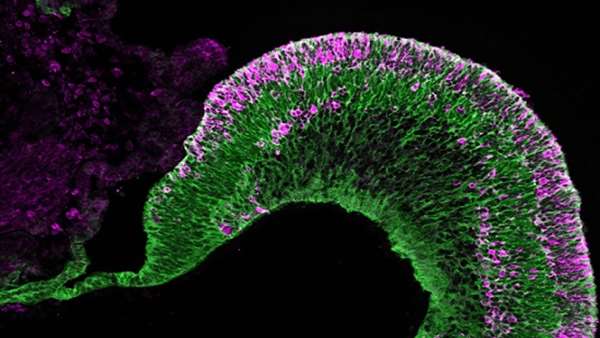An Eye Organoid Approach Identifies Six3 Suppression of R-spondin 2 as a Critical Step in Mouse Neuroretina Differentiation
Recent advances in self-organizing, 3-dimensional tissue cultures of embryonic stem cells (ESCs) and induced pluripotent stem cells (iPSCs) provided an in vitro model that recapitulates many aspects of the in vivo developmental steps. Using Rax-GFP-expressing ESCs, newly generated Six3−/− iPSCs, and conditional null Six3delta/f;Rax-Cre ESCs, we identified Six3 repression of R-spondin 2 (Rspo2) as a required step during optic vesicle morphogenesis and neuroretina differentiation.
Recent advances in self-organizing, 3-dimensional tissue cultures of embryonic stem cells (ESCs) and induced pluripotent stem cells (iPSCs) provided an in vitro model that recapitulates many aspects of the in vivo developmental steps. Using Rax-GFP-expressing ESCs, newly generated Six3−/− iPSCs, and conditional null Six3delta/f;Rax-Cre ESCs, we identified Six3 repression of R-spondin 2 (Rspo2) as a required step during optic vesicle morphogenesis and neuroretina differentiation. We validated these results in vivo by showing that transient ectopic expression of Rspo2 in the anterior neural plate of transgenic mouse embryos was sufficient to inhibit neuroretina differentiation. Additionally, using a chimeric eye organoid assay, we determined that Six3 null cells exert a non-cell-autonomous repressive effect during optic vesicle formation and neuroretina differentiation. Our results further validate the organoid culture system as a reliable and fast alternative to identify and evaluate genes involved in eye morphogenesis and neuroretina differentiation in vivo.





ارسال به دوستان